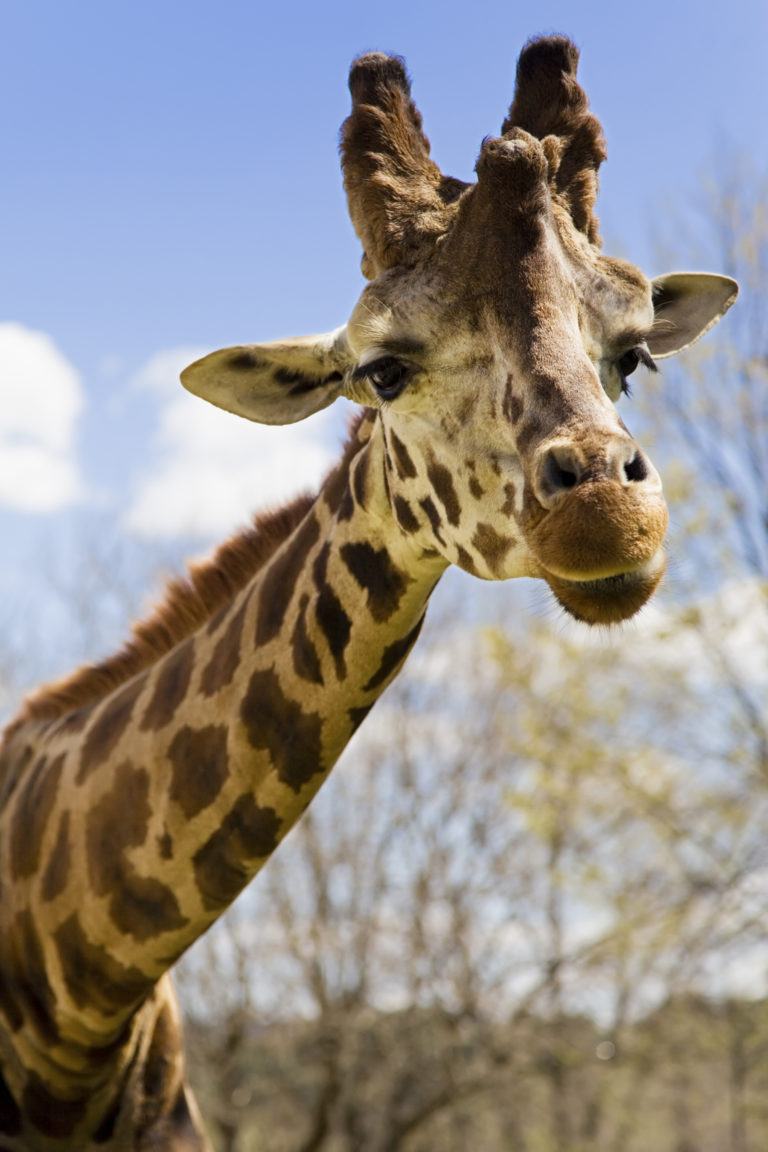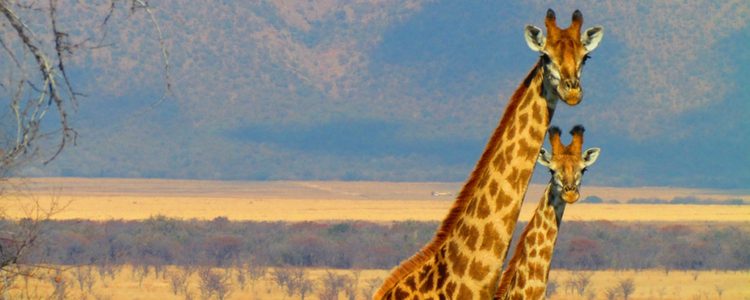
Take a drive along Harding Boulevard and you’re bound to see one or two inquisitive heads peering over the fence to inspect passers by. Elmwood Park Zoo’s giraffes, standing at over 15 feet tall, are some of the most recognizable animals in residence at Elmwood Park Zoo. Their iconic stature, friendly demeanors, and magnificent presence help solidify their status as a guest and staff favorite.
Now, Norristown’s most famous residents can be seen almost year round thanks to a brand new barn facility completed two summers ago. But their counterparts in the wild aren’t always so well accommodated.
Once a species deemed of Least Concern by the International Union for Conservation of Nature (IUCN), giraffe are now reclassified as one that is Vulnerable to extinction. Population surveys indicate that the giraffe population has decreased by almost 40 percent in the last 30 years. According to the Giraffe Conservation Foundation (GCF), it’s estimated that there are less than 100,000 giraffe remaining in the wild.
Why is this decline happening? The combined impacts of habitat loss, fragmentation, and degradation, poaching, disease, war, and civil unrest are threatening the remaining giraffe numbers and their distribution throughout Africa.
While conservation efforts are targeted internationally, U.S. zoos play an important role in the survival of the species. Together, the Ugandan Wildlife Authority and the GCF created Operation Twiga, a conservation project to help protect Uganda’s Rothschild giraffe. Operation Twiga’s aim was to relocate 20 Rothschild giraffes to the southern bank of the Nile River to populate a new area within Murchison Falls National Park. The cost of the endeavor was estimated at $100,000.
To fund the project, zoos across the country, including Elmwood Park Zoo, celebrated World Giraffe Day with events and fundraisers that encouraged donations to the GCF. These fundraising efforts provided much needed financial support for Operation Twiga, which was conducted successfully in January 2016.
“We are very happy to report that the giraffe on the southern side of the Nile River are doing well and we are planning to supplement the population later this year,” according to an update from the GCF. Since the success of Operation Twiga, GCF has developed a ‘road map’ to guide conservation activities throughout Africa with the hope to create a sustainable future for all giraffe populations. But those activities can come with a hefty price tag. The good news is that there are plenty of people to help foot the bill – about 700 million, to be exact.
According to the World Association for Zoos and Aquariums, about 1/10th of the world population visits zoos every year. Attendance at zoos across the country provides more than just a day of family fun. Funds accumulated from concessions, animal feedings, and admission help zoos like Elmwood Park Zoo give back to organizations that seek to conserve wildlife and its inhabitants, such as the GCF.
You don’t have to travel to East Africa to make a difference. When you stop by the zoo, and other AZA-accredited facilities, your membership or admission fees contribute to more than just an institution’s operating costs. You may think you’re just feeding a giraffe some lettuce. But you’re really supporting conservation and education efforts that have an impact long after your trip to the zoo is over.
So, will you stick your neck out for giraffe? To learn more about how you can get involved, or to donate directly to the Giraffe Conservation Foundation, visit www.giraffeconservation.org.
Written by Kathryn Saulinas


